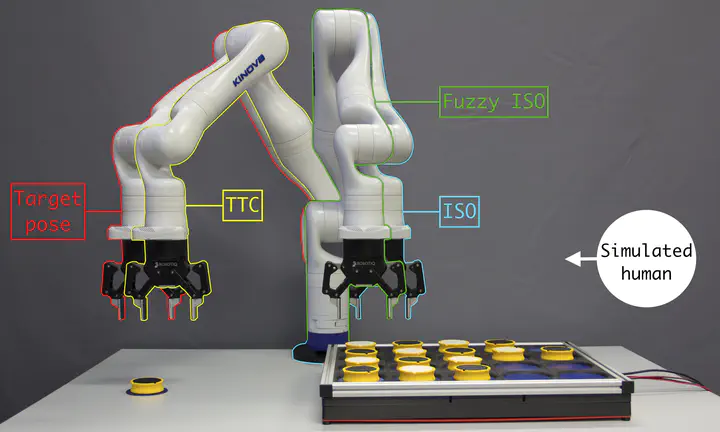Time-to-contact for robot safety stop in close collaborative tasks

Abstract
Within the next years, industrial collaborative robots will collaborate with human operators, whose safety might be compromised. To ensure a safe collaboration, robots should estimate the risk of collision with respect to the pose and motion of operators within the shared workspace. A common approach is to compute and maintain a minimum distance between humans and robots during tasks’ execution. Nevertheless, separation-based solutions do not capture the real dynamics of the human-robot interaction and tend to be rather conservative, avoiding a close human-robot collaboration. In this chapter, we explore the concept of time-to-contact (TTC) as a softer trigger of safety stops in collaborative scenarios where humans and robots are in constant closeness. Particularly, we propose a TTC formulation and study its advantages with respect to two approaches based on the protective distance proposed by the ISO standards. We compared the three methods in some representative cases extracted from an example of a collaborative task. The evaluation is firstly done in simulation and then in a more realistic setup with a simulated human, aiming for repeatability, and a real robot. Furthermore, we showcased our approach in a demo of a complete collaborative task. TTC allows robots to operate closer to humans and for longer times before a safety stop is issued, which benefits long-term productivity. This later stop produces shorter human-robot distances, which might affect safety. However, the increment in time that the robot moves before stopping (productivity) is far greater than the reduction in the distance (safety). Hence, we can state that TTC greatly improves productivity while slightly compromising safety. In conclusion, our work demonstrates that TTC is a smoother, but still safe, collision risk estimator for close human-robot collaboration..